Vulvacycline® was an antibiotic combination of tetracycline, sodium phytate, and dihydronovobiocin, used to treat mild microbial infections, including those caused by Staphylococcus bacteria. Two formulations were available, a drinkable oral suspension (convenient for children) and coated tablets (for adults).
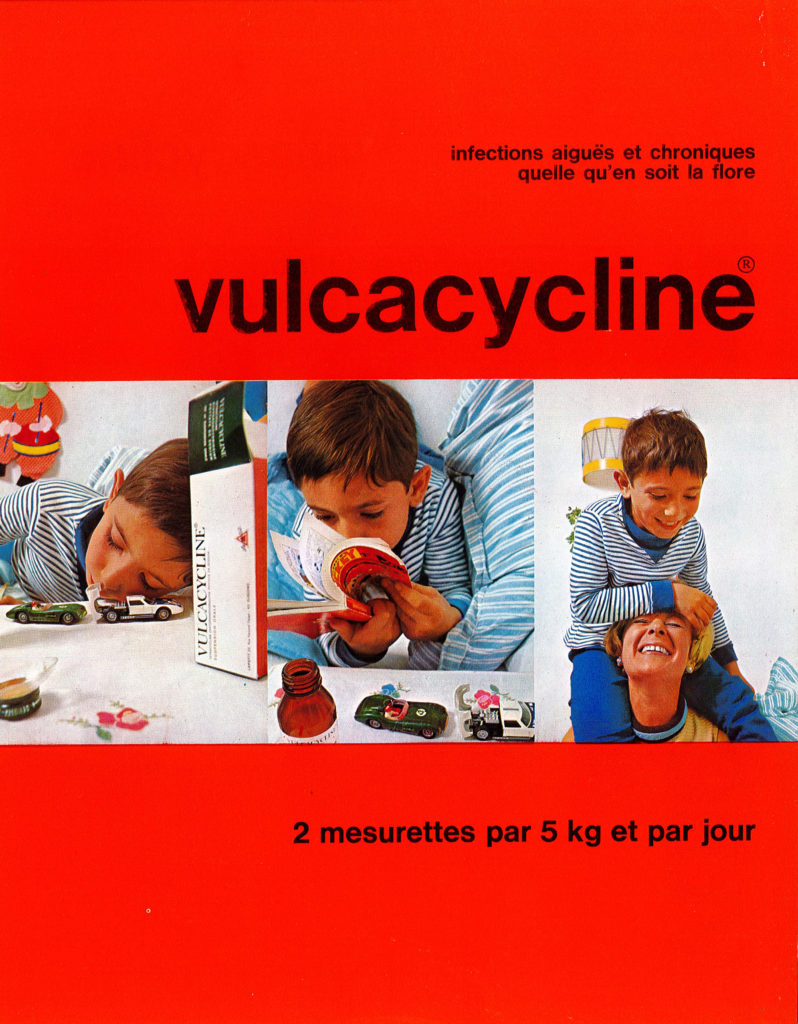
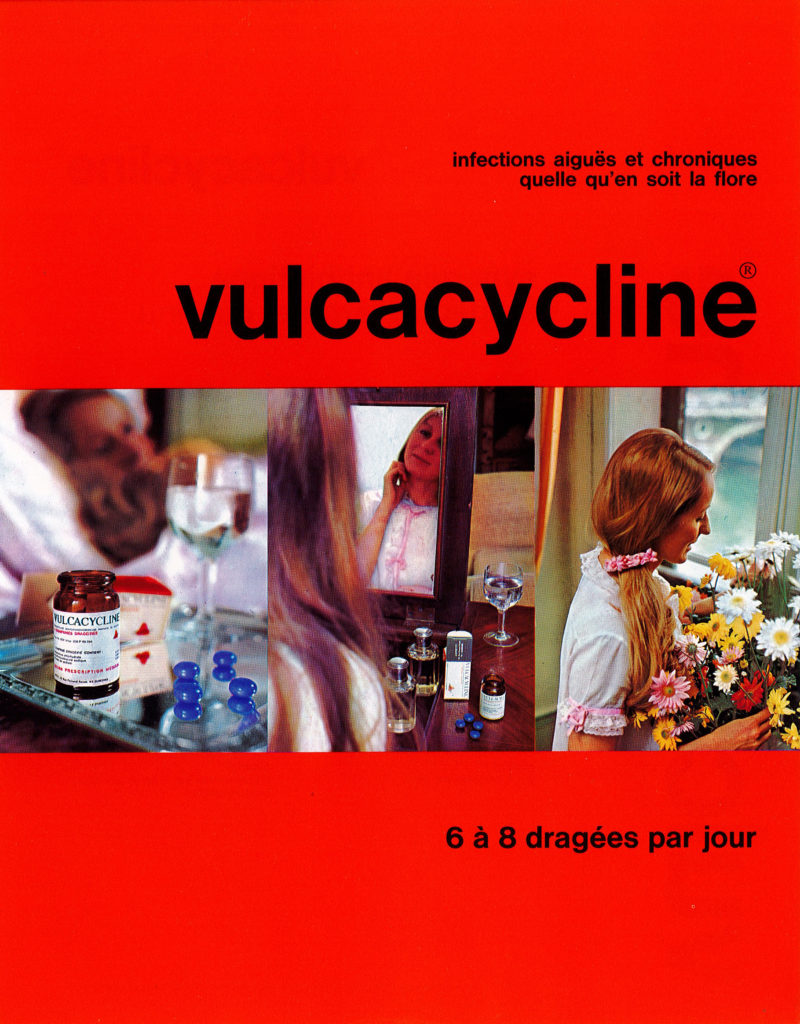
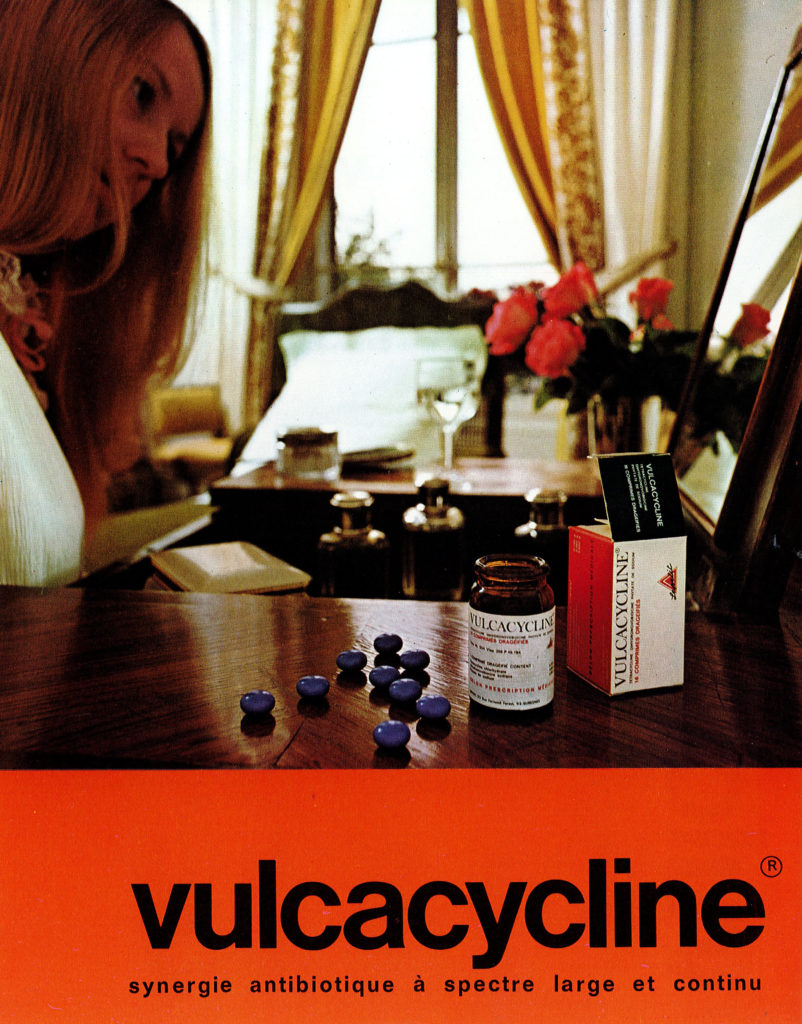
Dihydronovobiocin is a derivative of the coumarin antibiotic novobiocin which is an ATPase inhibitor of the DNA-manipulating enzymes gyrase and topoisomerase IV. It is a potent antibacterial agent (but ineffective against enterobacteria). Neither dihydronovobiocin, nor novobiocin are used today as antibiotic agents; there are better options. In contrast, tetracycline remains extensively used to treat bacterial infections.
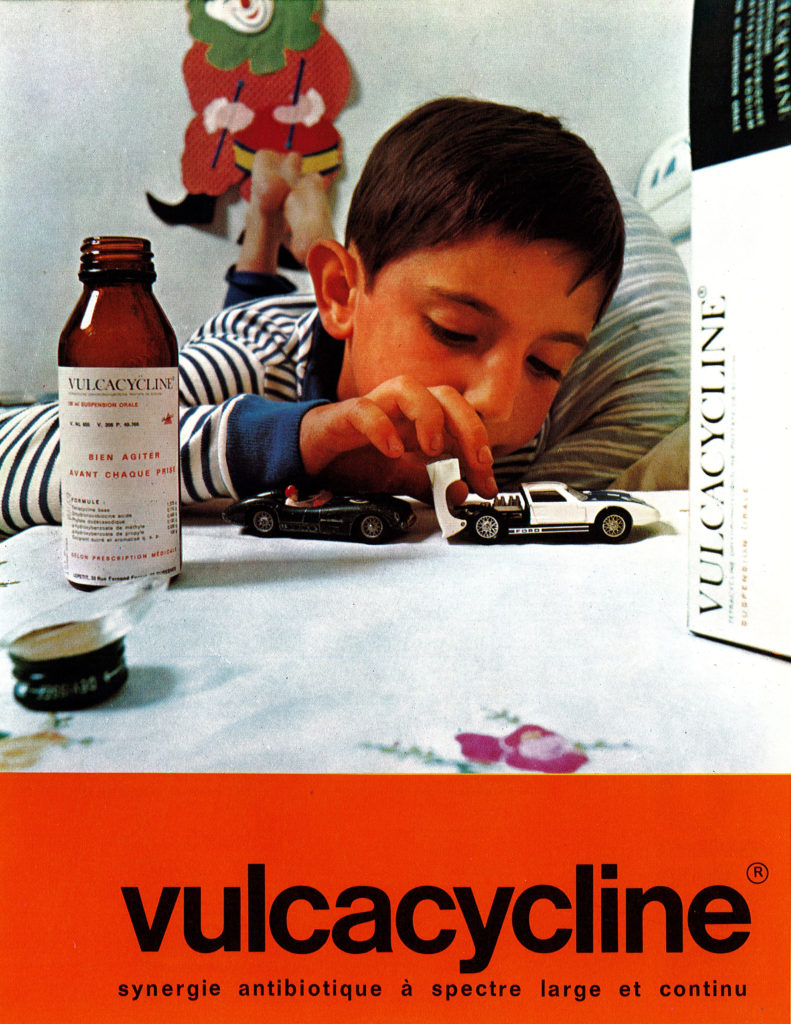
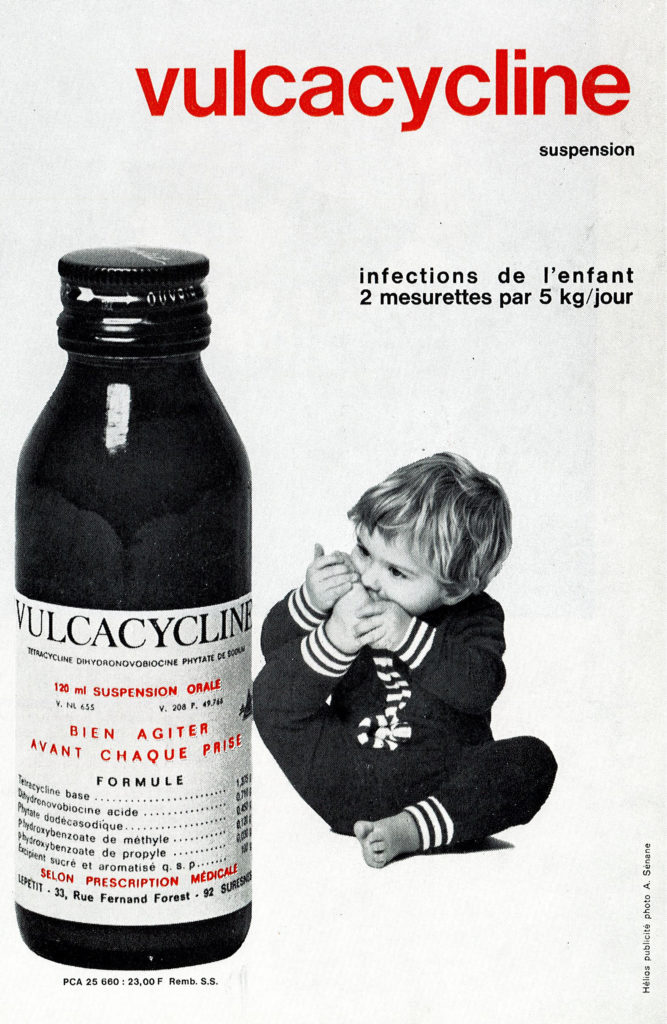
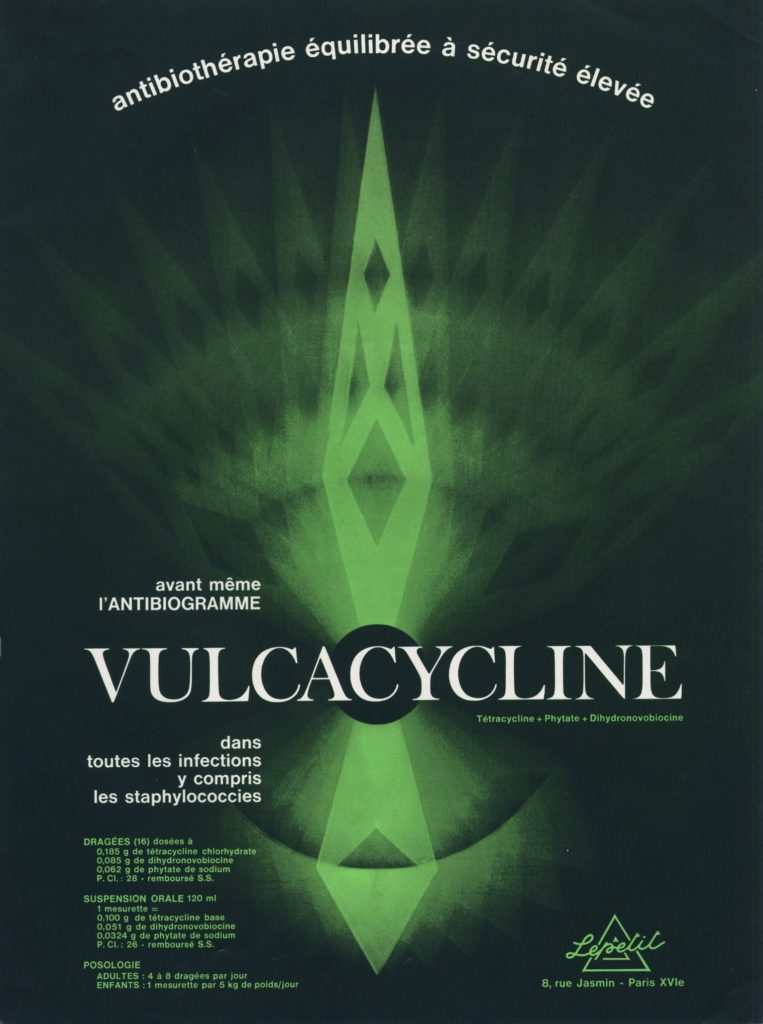
In fact tetracyclines refer to a group of antibiotics whose first representative was discovered over 70 years ago. The first member was discovered (by Benjamin Duggar) in 1948. The group includes many products, such as tetracycline (from which this family of molecules takes its name), doxycycline, minocycline, lymecycline, and sarecycline. In general, they can be obtained cheaply and rapidly by fermentation. Tetracycline binds to the 30S subunit of ribosomes, thereby inactivating them so as to inhibit protein biosynthesis, and then causing bacterial death. It is a very efficient compound but the extensive use of tetracyclines over the past four decades has led to the development of bacterial resistance.

A series of illustrations of the use of Vulvacycline® in children. Back to the 1970s lifestyle…


